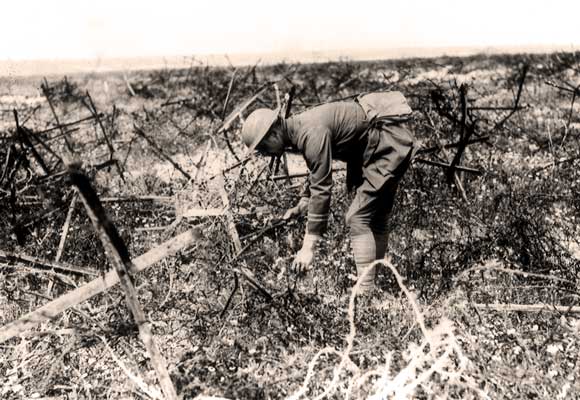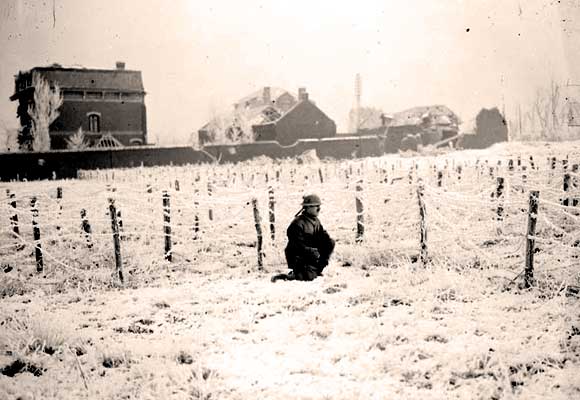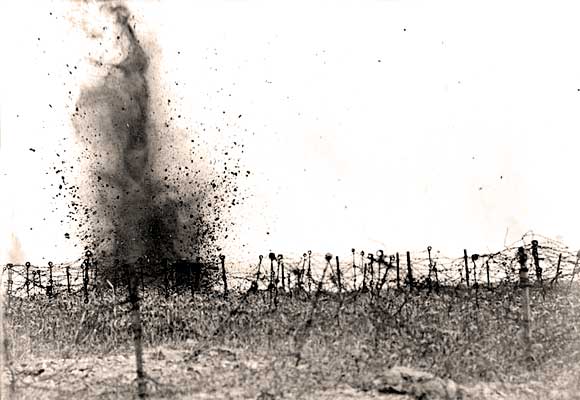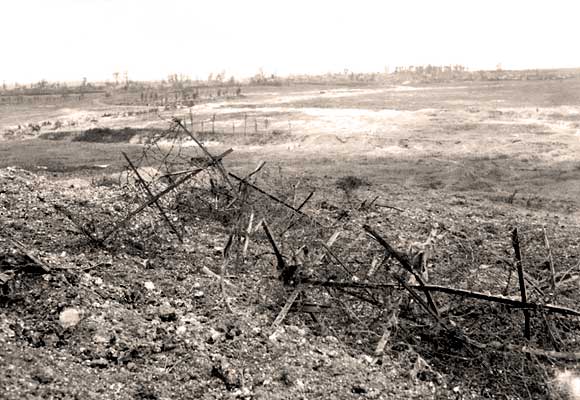Barbed Wire
Archived Content
Archived information is provided for reference, research or recordkeeping purposes. It is not subject to the Government of Canada Web Standards and has not been altered or updated since it was archived. Please contact us to request a format other than those available.
Barbed wire entanglements slowed down an army's attack on opposing trenches. Many soldiers were killed by machine-gun fire as they tried to climb over the wire. Using shell-fire to blow up the barbed wire was ineffective, so soldiers used wire cutters to cut through the wire at night.
Mr. Lindsay describes the dangerous job of rolling out and staking barbed wire.
Transcript
What about the problems about the barbed wire?
We had to make it at night, in pitch dark, rainy nights and real miserable nights and that was no fun doing it in the dark. We had special posts, you know, to put in the ground there. Some time they were a little like a screw, you could twist them so they would get in the ground and we would set our wire in.
Like a cork screw?
Like a cork screw, yes. Of course we were exposed there and, at the same time, we always had to be careful about machine guns. Some time the machine guns would come out and we would head first for a hole.
The barbed wire was not like the kind that is used to keep cattle in?
Oh no. They were spikes. The spikes were about an inch and a half and about a couple of inches apart so you had to be careful to get caught in it. Then that would rattle and make a little noise and you had to be careful all the time.
Was it hard to get loose once you were caught?
You had to be careful anyhow. A guy shouldn't have to be too excited, otherwise he was getting into trouble. He had to take his time and get out of it.
Images
- Date modified:



